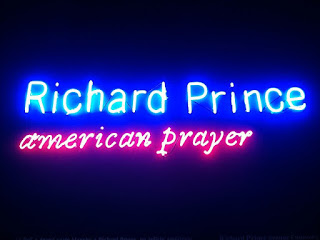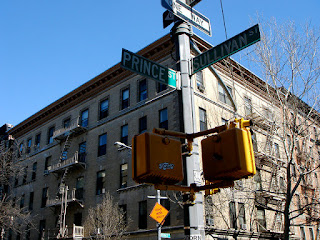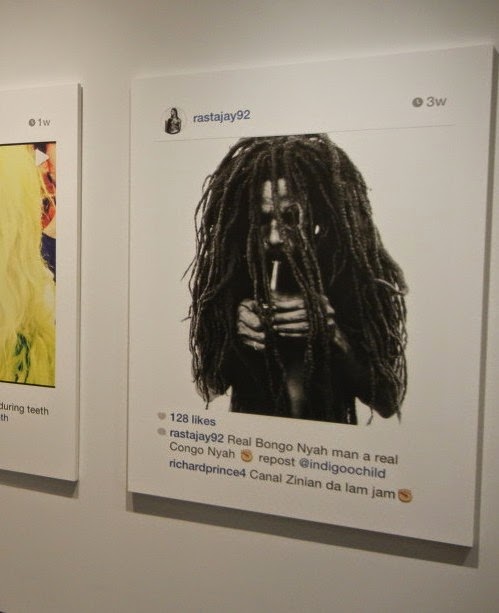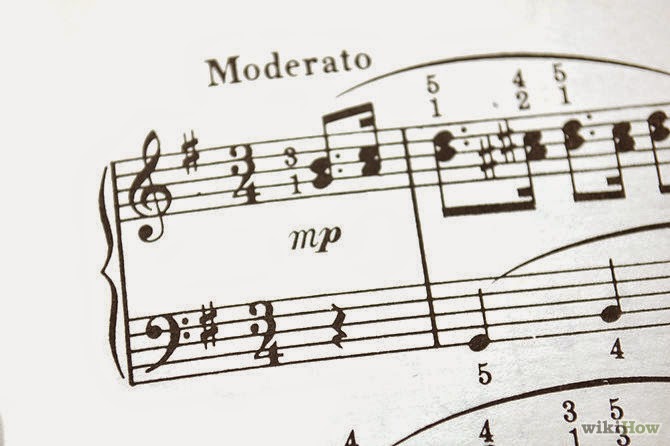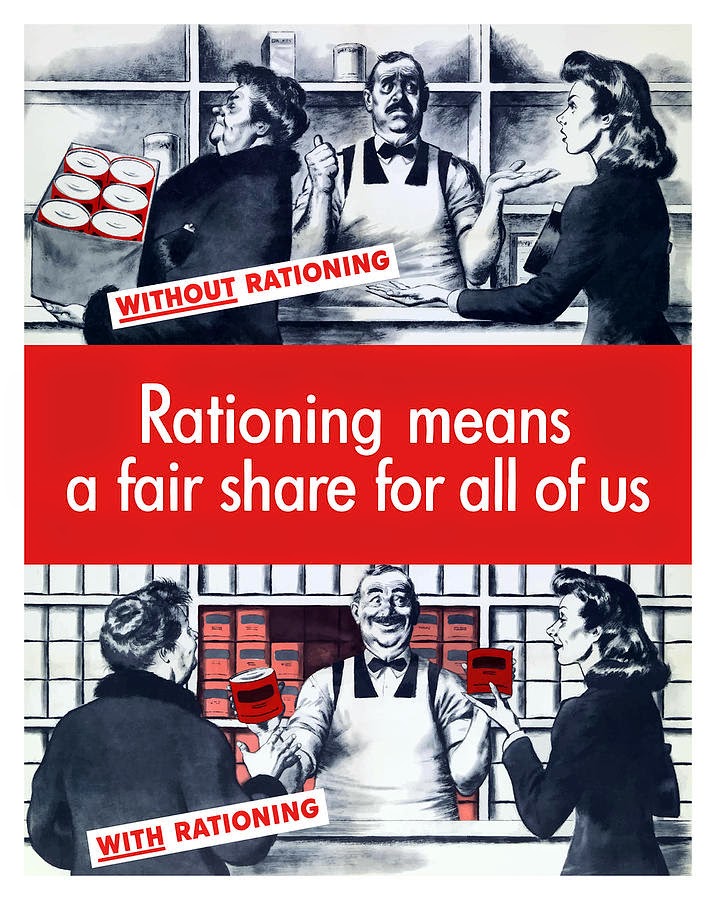We have often written on this blog about
the appropriation artist Richard Prince, whose work was at the origin of
several copyright infringement cases, including the Cariou
v. Prince case (see here,
here,
here,
and here).
Copyright bloggers owe him a full bowl of da
la jam gratitude.
Prince is still embroiled in two copyright
infringement suits following his New
Portraits 2014 exhibition at Gagosian
: a copyright infringement suit was filed by photographer Donald Graham (see here)
and another by photographer Eric McNatt (see here),
both in the Southern District of New York (SDNY). These two cases are Eric McNatt v. Richard Prince et al.,
1:16-cv-08896 and Graham v. Prince et al.,
1:15-cv-10160. Richard Prince filed last week his two memorandums of law in
support of his motions for summary judgment in these two cases, see here
and here.
Richard Prince is an appropriation artist.
He explained in his motion to dismiss the McNatt
case that the New Portraits “continue Prince over 40-year
career of using found photos and objects in order to comment on society,
through the use of text and recontextualisation.” The New Portraits, reproductions of Instagram posts complete with a
Prince’s comment, are each approximatively 41 by 41 inches, as an homage to
Andy Warhol who used this format for his portraits, as explained in the McNatt memo.
In the McNatt
case, Prince used a photograph of Kim Gordon, taken by Eric McNatt, and which
has been published on social media, to create one of his New Portraits works. In the Graham
case, Prince used Graham’s photograph of a
Rastafarian smoking a joint “which
already existed pervasively on the Internet, largely through Donald Graham’s own
actions” according to Prince’s memorandum, to create Portrait of Rastajay92. This is a rather odd argument, as Graham,
as the copyright holder, has the exclusive right to publish his work as he wished
to do, including on the web. This action does not give carte blanche to third parties to copy and use the work without
permission.
Did
Donald Graham grant an implied license?
Prince argued that Donald Graham had
published his work on his Facebook page on a public setting, thus granting
Facebook a non-exclusive, transferable license to use the photograph. Prince
also argued that Graham did not use any embedded watermarks on his work, had
not set any privacy settings for viewing the work, and that he understood that
once published on the web, it was forever published on the web.
Prince argued that he “reasonably interpreted Graham’s conduct as permission to use the [p]hotograph
in a new way” and had a “non-exclusive
implied license” to use the work,
citing the Field
v. Google case from the Nevada district court. In this case, the
court had found that Google had an implied license to display works protected
by copyright in cached links, even though the copyright owner did not
explicitly authorize such use. However, the court noted that Field could have
used a tag directing Google not to archive the pages, but did not do so and
thus had implicitly given Google a license to display his works.
Prince claimed in the McNatt case memo that Eric McNatt and Kim Gordon had posted the
original work on their Instagram accounts, and that McNatt still features the photograph
on his website without embedded watermarks. The original Graham work had been
republished on Instagram by a third party, user Rastajay92, and it is this
social media post which was reproduced by Prince, complete with his own
comment: “Canal Zinian da lam jam,” an
allusion to his Canal
Zone show, or, as Prince puts it, a “self-referential allusio[n] to
his own artistic biography.” I wrote “da
lam jam” on the Google translate box: it detected Arabic as a language, and
offered “it did not g” as a translation.
Curiouser and curiouser!
Prince’s memorandum in the Graham case argues that his New
Portraits exhibition was a “social commentary” and thus a “core
fair use principle… expressed through a novel technological and sociological
medium and context” and that the forfeiture of the works, as asked by
Plaintiff Donald Graham, “would have a
chilling effect on the progress of the arts, to the detriment of the public.”
An
ode to social media
Prince argued that his use of Graham’s work
was highly transformative, because he used what he described as “an austere description of a Rastafarian”
and turned it into “an ode to social media.” Prince further
argued that the fact that he did not add anything to the original work, unlike
in his works in the Cariou case, enhances his fair use claim, not
weakens it, because he needed to “authentically
replicate in the physical world the virtual world of social media.”
He used similar arguments in his motion to
dismiss the McNatt case, that he “imbued what was once an austere depiction, documenting a female rocker in a defiant
pose into part of an ode to social media.“
It may be an ode to social media, but it is
also copyright infringement. The defense is fair use.
Is
this ode to social media fair use?
Prince argued that his New Portraits were a parody of the social media posts as a whole.
So it is an ode to social media which is also a parody. A parody is indeed
highly transformative, and a highly transformative work is likely to be
considered by courts as a fair use of a protected work, under the first fair use
factor.
Prince argued that he used the Kim Gordon
photograph to comment on social media, about “the whole idea of putting up images on a new platform that was
available to anyone, to an entire population” and that artistic purpose was
“a world-away from McNatt’s purpose in making the [p]hotograph.”
For Prince, Graham’s sales of his works
have not suffered because of Prince’s use and Graham’s notoriety has even been
greatly enhanced by Prince’s use, and that thus the fourth fair use factor, the
effect on the market, should weigh in Prince’s favor.
Prince also argued that Graham did not have
the right to exploit the photograph, as the right of publicity of its subject
is governed by Jamaican law, and that therefore any harm done by Prince’s use
of the work would harm an “illegitimate
market.” Prince used a similar argument in his McNatt memo, arguing that the photographer did not obtain Kim
Gordon’s written authorization to use her image, as required by the New York
right of publicity statute, other than for their original use, a publication in
Paper magazine.
Prince also argued that the second
fair use factor, the nature of the copyrighted work, should be in
his favor, as the original Graham work was “more
factual than creative.” As for the third factor, the amount and
substantiality of the work used, in relation to the protected work as a whole,
Prince cited the Bill
Graham case, in both of his memos, where the Second Circuit held
that the third factor can weigh in favor of the defendant even if the work is
reproduced in its entirety.
Prince argued that the original Graham work
has been cropped and that the remaining work was necessary to serve Prince’s
purpose, commenting about social media. He argued in the McNatt memo that Prince used an entire Instagram post, complete
with “colorized emojis” and thus drew
the viewer’s attention around the image, thus “reducing the artistic or intellectual importance of the photographic
image relative to its physical portion of the painting.”
This is quite a fair use battle royal.
Copyrights enthusiasts will keep watching, and possibly, cheering.
Image is courtesy of Flickr user (vincent desjardins)
under a CC BY 2.0 license.
